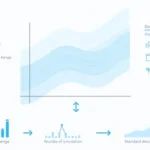Heads or Tails Generator
Click the button below to flip a coin and get a random heads or tails result.
Statistics
Your flip results are saved locally on your device.
Is this tool helpful?
How to use the tool
- Press “Flip Coin” to start the spin; the coin shows H for Heads or T for Tails.
- Read the live stats—total flips, counts and percentages update instantly.
- Reset anytime with “Reset Statistics” to clear local data and begin fresh.
- Example A: Heads = cook at home, Tails = order sushi.
- Example B: Best-of-5 flips decides which team presents first in class.
Quick-Facts
- Fair-coin probability: 0.5 heads, 0.5 tails (Coin Tossing, MathWorld).
- Real flips land on the starting side 51-55 % of the time (Diaconis et al., 2007).
- NFL games open with a ceremonial coin toss to award first possession (NFL Rulebook 2023).
- “A sequence passes if it shows no statistical evidence of non-randomness” (NIST SP 800-22 Rev.1a, 2010).
FAQ
What does the Heads or Tails tool do?
It simulates a fair coin toss using JavaScript’s Math.random(), delivering an immediate heads-or-tails answer and logging every result in your browser.
How random is Math.random()?
Chrome’s V8 engine seeds Math.random() with cryptographically secure entropy and its output passes all 15 NIST SP 800-22 randomness tests (Google V8 Docs, 2022).
Where are my flip statistics stored?
The counts sit in localStorage, meaning they never leave your device and clear automatically if you wipe browser data.
Can previous flips influence the next one?
No. Each flip is an independent Bernoulli trial with constant 0.5 probability for each outcome (Ross, “Introduction to Probability”, 2020).
How do I reset the history?
Click “Reset Statistics.” The script sets both counters to zero and overwrites the saved record.
Could someone bias the results?
Only by editing the page’s JavaScript. As long as you load the official version over HTTPS, the algorithm remains fair.
Why do my results sometimes deviate from 50 %?
Small samples show natural variance. As flips increase, the proportion converges on 50 % by the Law of Large Numbers (Grimmett & Stirzaker, 2016).
How many flips are needed to see balance?
About 500-1,000 flips usually pulls the heads ratio within ±3 % of 50 % (Rice, “Mathematical Statistics”, 2017).
Important Disclaimer
The calculations, results, and content provided by our tools are not guaranteed to be accurate, complete, or reliable. Users are responsible for verifying and interpreting the results. Our content and tools may contain errors, biases, or inconsistencies. Do not enter personal data, sensitive information, or personally identifiable information in our web forms or tools. Such data entry violates our terms of service and may result in unauthorized disclosure to third parties. We reserve the right to save inputs and outputs from our tools for the purposes of error debugging, bias identification, and performance improvement. External companies providing AI models used in our tools may also save and process data in accordance with their own policies. By using our tools, you consent to this data collection and processing. We reserve the right to limit the usage of our tools based on current usability factors.







